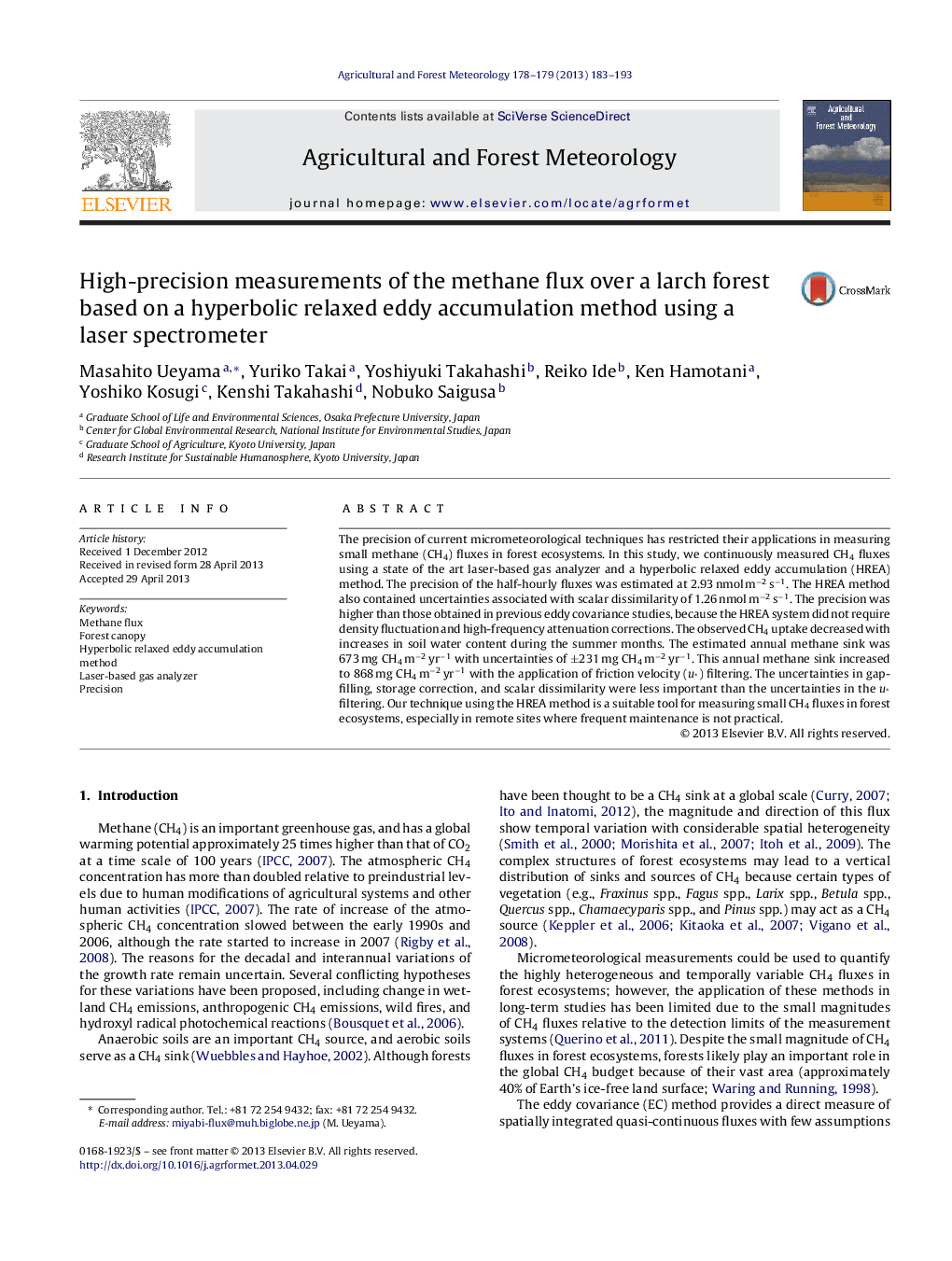| Article ID | Journal | Published Year | Pages | File Type |
|---|---|---|---|---|
| 6537873 | Agricultural and Forest Meteorology | 2013 | 11 Pages |
Abstract
The precision of current micrometeorological techniques has restricted their applications in measuring small methane (CH4) fluxes in forest ecosystems. In this study, we continuously measured CH4 fluxes using a state of the art laser-based gas analyzer and a hyperbolic relaxed eddy accumulation (HREA) method. The precision of the half-hourly fluxes was estimated at 2.93 nmol mâ2 sâ1. The HREA method also contained uncertainties associated with scalar dissimilarity of 1.26 nmol mâ2 sâ1. The precision was higher than those obtained in previous eddy covariance studies, because the HREA system did not require density fluctuation and high-frequency attenuation corrections. The observed CH4 uptake decreased with increases in soil water content during the summer months. The estimated annual methane sink was 673 mg CH4 mâ2 yrâ1 with uncertainties of ±231 mg CH4 mâ2 yrâ1. This annual methane sink increased to 868 mg CH4 mâ2 yrâ1 with the application of friction velocity (u*) filtering. The uncertainties in gap-filling, storage correction, and scalar dissimilarity were less important than the uncertainties in the u* filtering. Our technique using the HREA method is a suitable tool for measuring small CH4 fluxes in forest ecosystems, especially in remote sites where frequent maintenance is not practical.
Keywords
Related Topics
Physical Sciences and Engineering
Earth and Planetary Sciences
Atmospheric Science
Authors
Masahito Ueyama, Yuriko Takai, Yoshiyuki Takahashi, Reiko Ide, Ken Hamotani, Yoshiko Kosugi, Kenshi Takahashi, Nobuko Saigusa,
